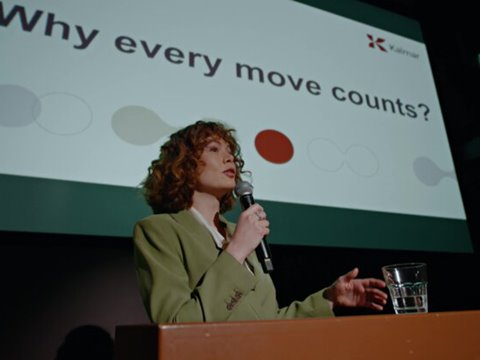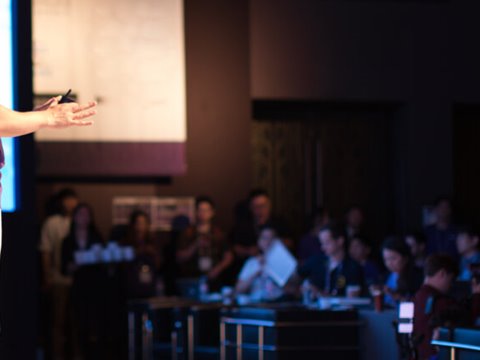
Can a container be more than a container?
In our previous post, we talked briefly about how the concept of user experience (UX) can help build brand loyalty and create products and services that not only fulfil their functional requirements, but also feel good to use. As a thought experiment, let's consider some more futuristic scenarios. In our current world, a shipping container is just a container. What if we could turn it into something that would create an experience – and this experience could generate revenue for various players in the logistics chain?
We are used to thinking of containers as simple boxes that provide no additional value beyond physically conveying things from A to B. Moreover, beyond the generic markings of each shipping company, containers all look alike, irrespective of what goods are being transported. But what if this idea was turned on its head?
What if, in the future, premium sports cars would be transported in beautifully designed transparent containers that announced to everyone that this shipment was really something special? Would this provide a superior experience compared to hiding the car in a traditional container? Would manufacturers see this visibility and experience as supporting their brand image and be willing to pay for it? Consumer electronics companies such as Apple have long understood the value of beautiful packaging as part of the total user experience. Could this be applicable for container logistics as well?
Or, for another scenario, what if shipping containers incorporated display technology – e.g. digital paint – that would enable their colour and/or surface images to be changed? This would turn a nondescript steel box into a smart surface that could advertise the products being transported. Going a step further, what if these smart displays could be linked together, turning the ubiquitous container stacks at terminals into massive, dynamic display matrices, alive with colour and information?
Imagine a visual surface hundreds of containers wide and dozens high. Now, that would be a wow.
If containers became a form of prime real estate for advertising, subject to the same competitive supply and demand mechanisms as web advertising, it might turn out that the real profit in container logistics was not in the actual shipping of the container at all. If a single container-turned-advertising-billboard on a highway truck sounds radical, imagine a visual surface hundreds of containers wide and dozens high. Now, that would be a wow.
In addition to the obvious commercial applications, this would open up fascinating possibilities for urban design. A technology such as this could increase the transparency of port operations, giving residents and other stakeholders a clear and concrete real-time view of what the port is doing and what kind of value it generates for its community. If a container port were able to generate a visual and conceptual "wow" effect of its own, people might be happy and proud to live next to one.
UX goes far beyond the traditional concepts of usability and ergonomics. It's not just about designing a crane cabin that is more comfortable to use, but about finding new ways of doing things better. Digitalisation increases the chances of finding these radical innovations since they are more and more about ideas, systems and connections, rather than features of specific physical equipment. What about a world full of autonomous container terminals that were operated by consumers over the Internet in the fashion of a gaming platform? This would create an experience of dancing robots operated by crowd-sourced operators and Artificial Intelligence (AI). Whether this could be a reality is not contingent on hardware capability. It is a question of imagination, digital connectivity and a totally new way of organising an existing industry.
Granted, the ideas outlined above are still somewhat far-fetched, but the general principle holds: It is only a matter of time before someone comes up with a combination of new technology and disruptive business model that will recast our conventional wisdom of how value and revenue are generated in the container logistics chain. And when this happens, it is more than likely that a superior user experience – a "wow" effect of some kind – will be at the core of it.
Author and futurist Arthur C. Clarke famously wrote, "Any sufficiently advanced technology is indistinguishable from magic." In consumer products, this sense of wonder is something we have all experienced from now and then, and product manufacturers dream of creating that one groundbreaking device or application that transforms our entire expectation of how we experience our familiar technology. Would it be possible to bring some of that magic into the world of industrial logistics as well? After all, we aren't creating services and solutions for machines. We aren't creating them for the industry or the market. We are creating them for people.
Jari Hämäläinen
Director, Terminal Automation, Kalmar
Maaria Nuutinen
Vice President in Business, Innovation and Foresight at VTT Technical Research Centre of Finland Ltd
This article was co-authored with Maaria Nuutinen. Nuutinen was programme manager of the FIMECC UXUS programme (2010-2015). Her passion is to understand and help human and organisational activity in the context of technology enabled business. She is particularly interested in developing ways for enhancing mindset change and value co-creation based on user and customer experience. Her research interests include organisational culture, change management and service innovations. She is a Vice President in Business, Innovation and Foresight at VTT Technical Research Centre of Finland Ltd. Maaria Nuutinen received her PhD in psychology from the University of Helsinki in 2006. This post has been published also in VTT’s blog.
Related articles
Further reading
External resources
Subscribe and receive updates in your email
Tilaa julkaisujamme













